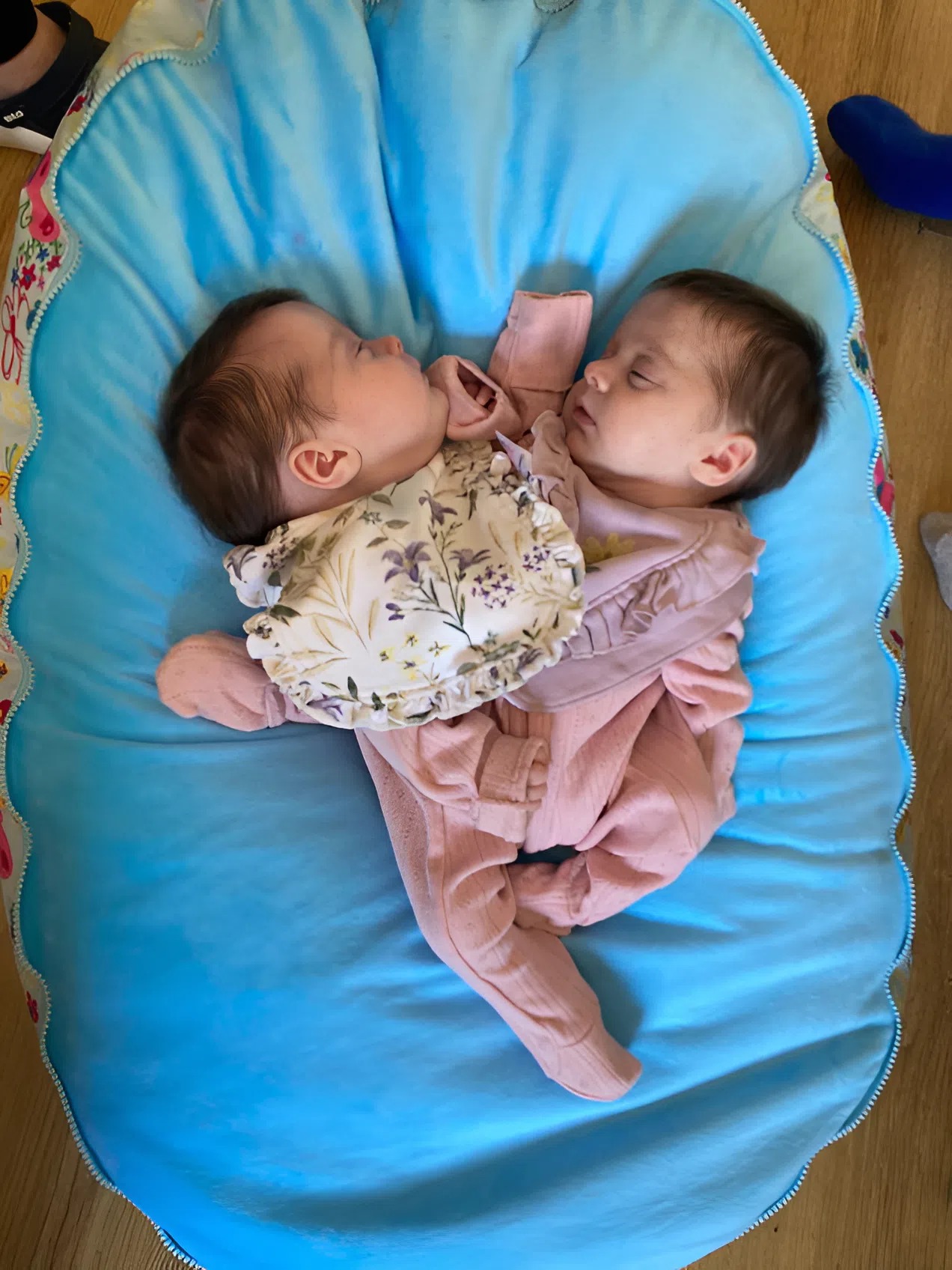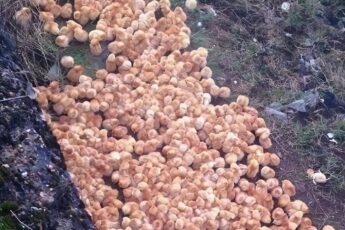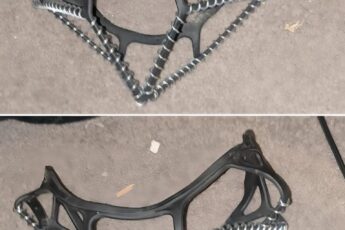
In northern Ireland, the Bateson family had been clinging to hope and patience for many years. For them, each new scan, each doctor’s visit, felt like a step closer to a miracle they desperately wanted but feared might remain out of reach. They had always dreamed of welcoming children into their lives, and after undergoing fertility treatments, that dream finally seemed within their grasp. When Ann and David Bateson learned that they were expecting twin girls, their hearts swelled with happiness and anticipation. But that joy quickly turned into a whirlwind of concern when the doctors delivered unsettling news: their daughters were conjoined twins, fused from the chest down to the pelvis.
On the pregnancy scan, the two tiny hearts on the ultrasound screen beat in unison. Ann watched as the image appeared to show two separate little bodies, but her joy was soon replaced by worry. The scans revealed something far more complicated than she had imagined—Annabelle and Isabelle shared a liver, intestines, bladder, and one leg. The other leg was separate for each girl, but their bodies were so tightly intertwined that even the most experienced surgeons could not immediately determine whether separation would be possible or safe. The prospect of surgery was daunting, filled with uncertainty and potential danger.
When the girls were born in March 2022 at University College Hospital in London, the room was filled with hope and cautious optimism. Specialists carefully prepared for their arrival, and immediately after birth, Annabelle and Isabelle were transferred to one of the UK’s top children’s hospitals, where a team of specialists began a long, complex process of planning. Their first goal wasn’t just to “separate” their joined bodies; it was to ensure that each girl could live, grow, and develop independently. The process would require meticulous planning, patience, and cutting-edge medical expertise.
Over the course of many months, the doctors studied every detail of the twins’ anatomy. They examined scans, created detailed 3D models of their organs and blood vessels, and practiced countless virtual simulations. Every possible scenario was foreseen—every bump, twist, or complication had to be accounted for before the actual surgery. The team knew that it was not just about cutting and disconnecting two bodies but about giving each girl a future of independence, mobility, and health.
Finally, in September 2022, the day arrived—the culmination of years of preparation. More than thirty specialists from different fields gathered in two adjacent operating rooms to perform the many-hour operation. The atmosphere was tense, focused, and filled with a mix of hope and apprehension. The surgeons worked tirelessly for eighteen hours, delicately separating the shared organs, blood vessels, and tissues. It was an intricate dance of precision, where one wrong move could have meant losing one or both girls forever.
When the surgeons finally finished, Annabelle and Isabelle lay on separate tables for the first time in their lives. Though they still had one leg of their own, they were now physically apart, each on her own path forward. Both girls survived the operation—a victory that once seemed unimaginable. The road to recovery was gradual, filled with weeks of intensive care. Dozens of dressing changes, additional surgeries, and constant monitoring followed, as each twin learned to adapt to her new body.
Since then, they have undergone about twenty surgical procedures in total, each one pushing the boundaries of what medicine can accomplish. Today, Annabelle and Isabelle are growing up much like other siblings—playing, learning, and dreaming of a future that they are determined to create. They have distinct personalities: Annabelle, the more talkative and social one, loves singing and attention, while Isabelle is calmer but fiercely active and brave in her pursuits. Despite the physical toll, they’re full of life and curiosity, determined to enjoy every moment.
They attend physiotherapy sessions regularly, working on their posture and mobility. They’re learning to use special orthoses to aid their walking and are preparing for prosthetic limbs, which will help them gain independence and confidence in their movements. Their journey has been long and challenging, but their resilience and the support of their family continue to inspire everyone around them. Annabelle and Isabelle are living proof that even the most complex medical conditions can be overcome with a combination of expert care, technological innovation, and unbreakable parental love. They are shaping their own futures—full of promise, hope, and the strength to defy expectations.





